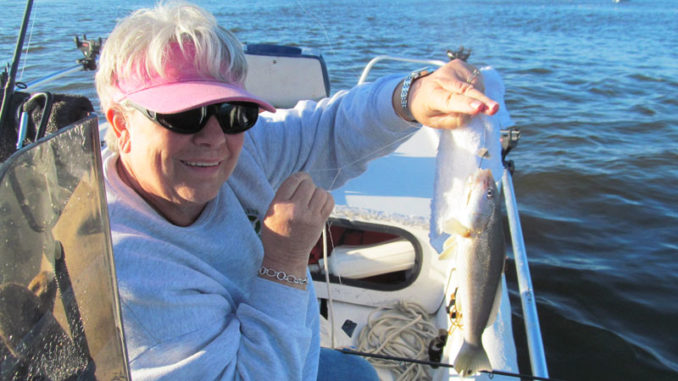
Anglers are waiting in lower Cape Fear River
The first panfish to arrive along North Carolina’s southern coast in the spring are whiting, aka sea mullet or Virginia mullet.
Yes, the little fish with many names typically arrives by mid- to late March. And it arrives to eager anticipation that has been building for weeks.
The name whiting covers northern, southern and gulf kingfish. They are a favorite target of many early spring fishermen. Their arrival may vary from year to year. But these tasty panfish are one of the first fish to arrive each spring, and eager fishermen are waiting.
Whiting usually show first just outside of the mouth of the Cape Fear River, on a section of softer bottom several hundred yards off the beach between the mouth of the river and the Oak Island Lighthouse. They are usually here for a couple of weeks to a month or more. At some point, they move inshore to just beyond the breakers along the beaches and into the lower river.
Anchoring, trolling, or drifting will all work
Whiting like two places in the lower Cape Fear River. One group stops just inside the river and holds for several weeks to several months along the edge of the shipping channel, between Bald Head and Battery Islands. The other group moves a little farther upriver to near the Southport-Fort Fisher ferry, on the Fort Fisher side. These fish may roam from along the rocks that separate Buzzard Bay, Second Bay and The Basin from the river to Fort Fisher, especially along the drop into the ferry channel.
Do not anchor in the ferry channels; anchor along the edge a short cast to the drop. The edges can also be fished while drifting or using a trolling motor to follow the contours.
The basic setup for catching whiting is a medium-action spinning or casting outfit and a double-drop bottom rig. Some fishermen prefer plain rigs. Others prefer beads or small plastic squids just above the hooks. A 2- or 3-ounce sinker, Eagle Claw L072 hooks in Nos. 4 or 6 and pieces of fresh shrimp or Fishbites synthetic bloodworms complete this rig.
Some fishermen like to use a small speck rig for a little more sight recognition in the dirty water. The bucktails on the speck rig are tipped with small pieces of shrimp or Fishbites, and fishermen lightly jig this rig.
Currently there are no size restrictions or number limits on whiting in North Carolina waters.

